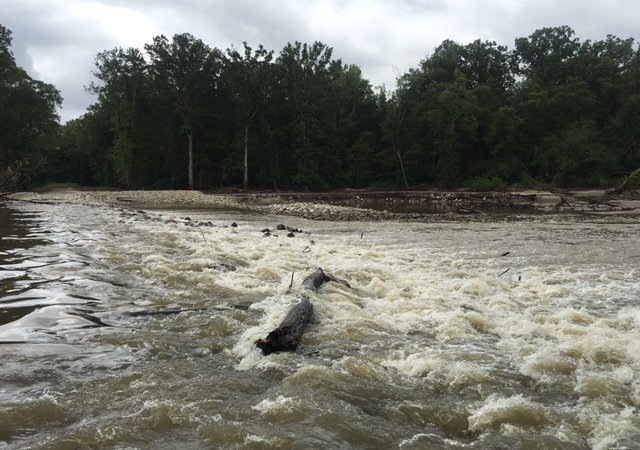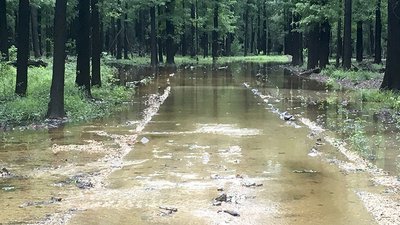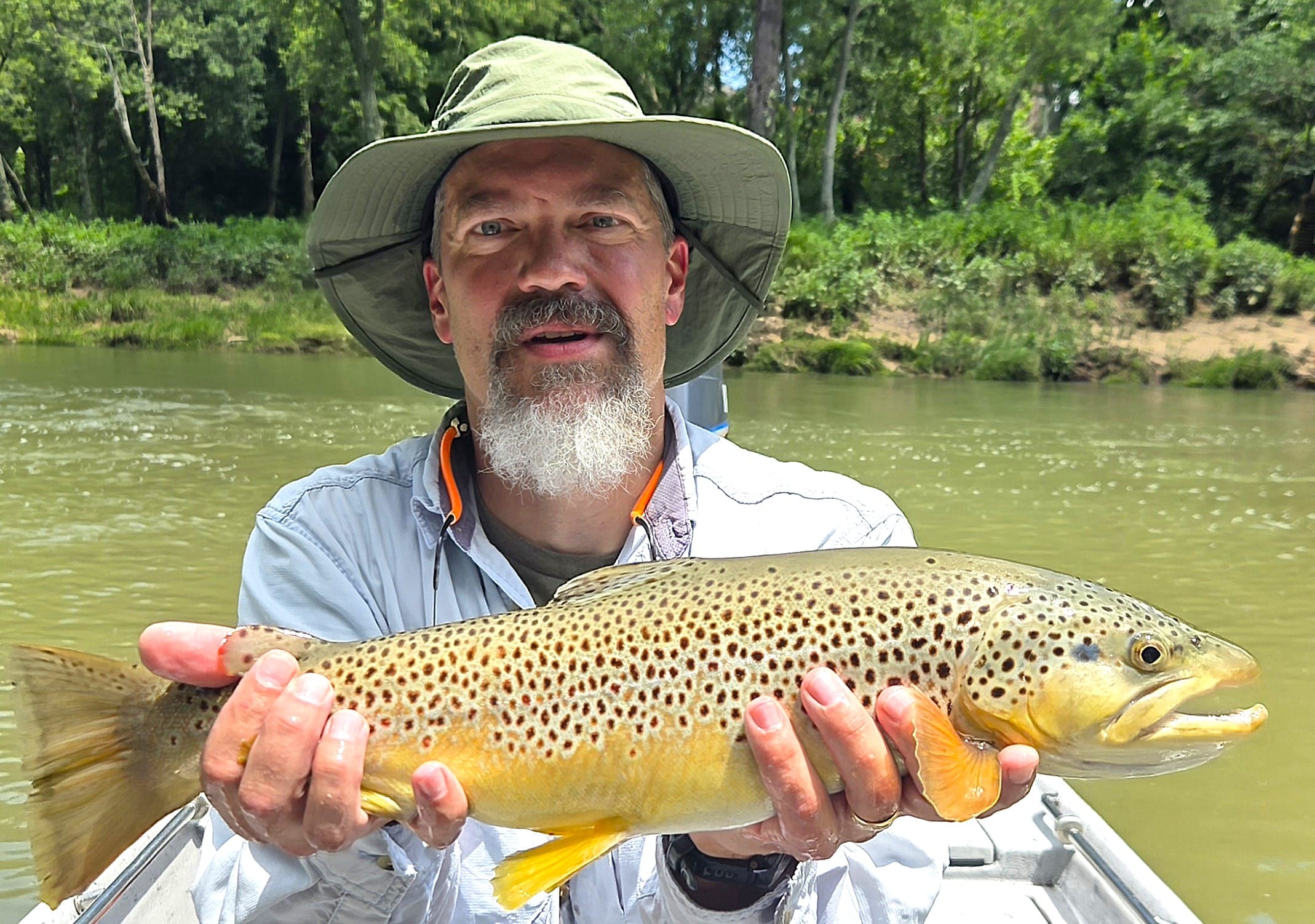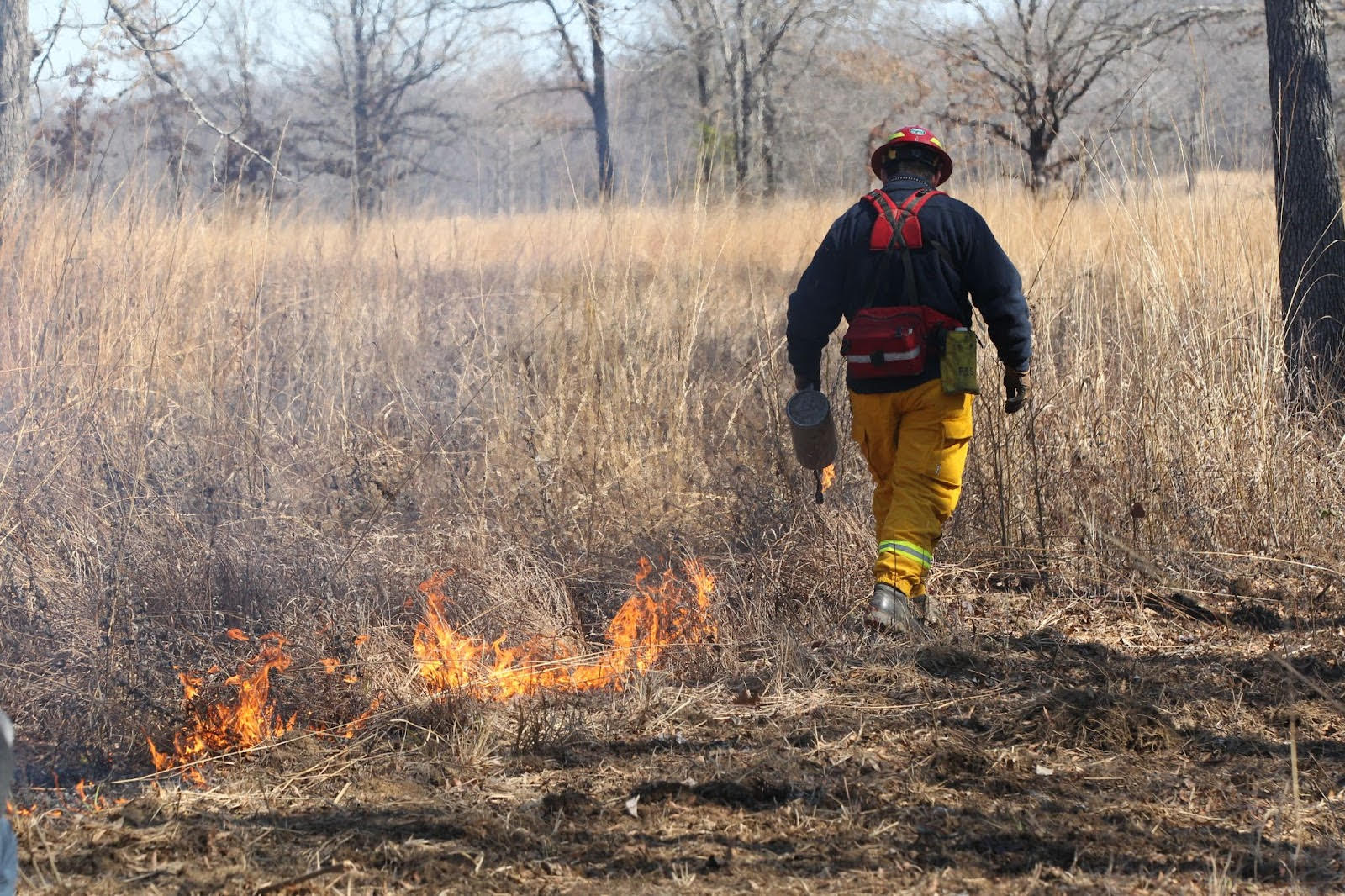Roadwork an annual certainty on WMAs
ON 12-09-2020

Dec. 9, 2020
Randy Zellers
Assistant Chief of Communications
LITTLE ROCK — The Arkansas Game and Fish Commission owns more than 385,000 acres of wildlife management areas to offer wildlife habitat and public hunting and angling opportunities in The Natural State, but much more goes into public access than a parking location. Last year the AGFC spent more than $678,000 to maintain the vast network of roads on WMAs, and that is a shadow of what is truly needed to keep these access points open.
“We worked up a figure for best management practices on the roads we currently own, and the annual maintenance costs we should spend to keep these roads in peak condition is more like $2.2 million,” says Kevin Mullen, chief of the AGFC Operations Division, which coordinates maintenance contracts throughout the state. “We try to spread the money we have as much as possible, but there are many other needs to figure into maintenance budgets, like levee mowing, parking lot maintenance, building and sign repairs, trash contractors and other general upkeep.”
Mullen said the large figures for road maintenance are the result of two major factors.
“We own more than 600 miles of roads in our WMAs, and all of that is gravel,” Mullen said. “Gravel roads require annual maintenance when they see as much traffic and rough conditions as our roads get.”
Mullen says some roads on well-drained soils and more mountainous areas can be maintained with grading and gravel placement with only occasional washouts, but roads around bottomland hardwoods are much more susceptible to damage requiring repair.
“A lot of the roads we have in these areas go underwater at least once a year,” Mullen said. “That means they need much more regular maintenance.”

A good example of this cycle that frustrates area managers, engineers and outdoors enthusiasts is the one that has occurred at Clear Lake Road on Beryl Anthony Lower Ouachita Wildlife Management Area in Union County. Regular floods combined with vehicle traffic have damaged the road to a tune of more than $200,000 in repairs on this 5-mile stretch of gravel during the last five years alone.
“The cost is high, but this road leads to Clear Lake, which is a very valuable resource to local anglers when the water levels are right,” Mullen said. “But there are times when portions of the road are 10 feet under floodwater, and with the tropical storms and heavy flood events we’ve had during the last few years, it would almost serve better as a boat lane than a road.”
Much like with roads in the Delta on the eastern half of the state, the cost of building up Clear Lake Road to an elevation high enough to be floodproof would measure in the millions.
“That sort of expense is just unattainable with our current budget,” Mullen said.
Garrick Dugger, assistant chief of the Wildlife Management Division at the AGFC, adds that such infrastructure could actually do more harm than good to the surrounding wildlife habitat.
“Even if we had the money, roads of this nature act as dams that cut off sheet flow of water across a wetland, restricting water flow off of forests and causing habitat loss,” Dugger said. “These inadvertent dams are one of the factors causing many of the state’s greentree reservoirs to become less desirable to waterfowl.”
Chris Colclasure, AGFC deputy director, said the maintenance of roads, access and other infrastructure is a growing concern at the agency, but it is only one of many expenses the AGFC faces.
“Our primary charge is to provide and conserve habitat for wildlife for the benefit of the people of Arkansas, but that takes many forms,” Colclasure said. “Maintaining wildlife openings, proper forest management, prescribed fire, manipulation of water to create superior wetland habitat, and many other sorts of fieldwork are being conducted on a daily basis. Fisheries habitat work, lake renovations, spillway and levee repairs and fish culture also play a role in our daily commitments. Then you need to factor in the investments we make into educating the next generation of hunters and anglers to ensure conservation’s future; there is much more going on than most people realize.”
Colclasure agrees that access to the land and water for public use is a priority at the agency, and the AGFC capitalizes on many partnerships wherever it can to lighten the load.
“We do see some reimbursements from the Federal Emergency Management Agency, but the money must be spent upfront, and then we can reclaim a portion of it,” Colclasure said. “And partnerships to help develop roads are much harder to come by than those for securing property or public hunting access. In the end, these are annual costs and they will continue to climb with every acre we add to the WMA system.”
Recent News

Arkansas Wildlife Weekly Fishing Report
Jul. 3, 2025
Subscribe to Our Weekly Newsletter E-mails
Don’t miss another issue. Sign up now to receive the AGFC Wildlife Weekly Newsletter in your mailbox every Wednesday afternoon (Waterfowl Reports are published weekly during waterfowl season and periodically outside the season). Fishing Reports arrive on Thursdays. Fill in the following fields and hit submit. Thanks, and welcome!

